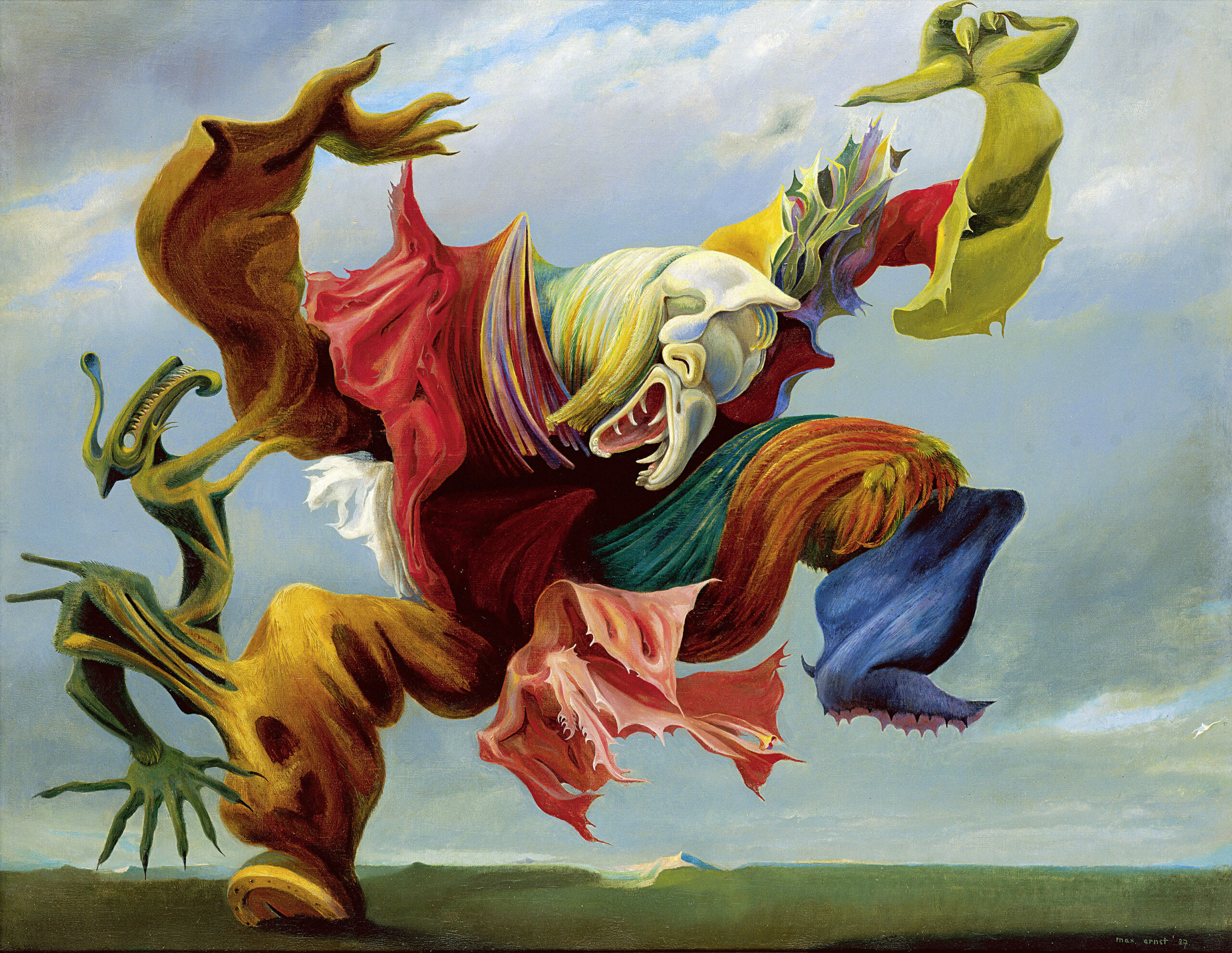MAX ERNST. Mondes magiques, mondes libérés

Max Ernst – The Fireside Angel (The Triumph of Surrealism) 1937)
Private Collection, Switzerland; Classicpaintings / Alamy Stock Photo © Max Ernst by SIAE 2022
Max Ernst: the Dadaist, Surrealist, Romantic, pataphysicist and humanist interested in the Renaissance. Today, his life and work seem kaleidoscopic, extremely multifaceted yet unmistakable. A painter, sculptor, draughtsman, graphic artist and poet, Max Ernst summed up his extraordinarily varied, multiform art and life in a single credo: “My wanderings, my unrest, my impatience, my doubts, my beliefs, my hallucinations, my loves, my outbursts of anger, my revolts, my contradictions, my refusals to submit to any discipline – even my own – and the occasional visits of Perturbation, My Sister and The Hundred Headless Woman, certainly did not produce a climate conducive to the creation of peaceful, serene work.” The vast range of themes and experimentation in Ernst’s oeuvre spans 70 years of the history of the 20th century, between Europe and the United States, inevitably defying concrete definition.
The artist’s universe confounds and amazes, continually challenging perception by combining logic and formal harmony with unfathomable enigmas, while art and nature, beauty and the bizarre magically coexist, as in the Mannerist and Baroque tradition.
The turning point in his career in 1919 was akin to a Copernican Revolution, triggering the creation of indirect techniques and new modes of representation. He never abandoned the Dada approach of subverting traditional aesthetics.
The techniques of overpainting, collage, frottage, grattage, decalcomania and oscillation, enabled the artist to take endless pleasure in experimentation, producing wondrous realities and rendering the banal poetic. The artist introduced stratagems reminiscent of 17th-century wit and the Romantic irony of the late 18th century, and deliberately distanced himself in presenting motifs and elements of his world by employing scenic devices, representative images, and even a figure/ alter ego like the imaginary bird “Loplop”.
In the art of Max Ernst, the polarities between past and present, natural and artificial coexist in a constant dialectical tension. Max Ernst’s life and work still have a powerful effect: they are part of history, but their impact and significance can be timeless and open up ever-new perspectives. Starting from the world and the cultures he found himself experiencing in the course of his life, Max Ernst created a world and a cosmos that were truly his own.
